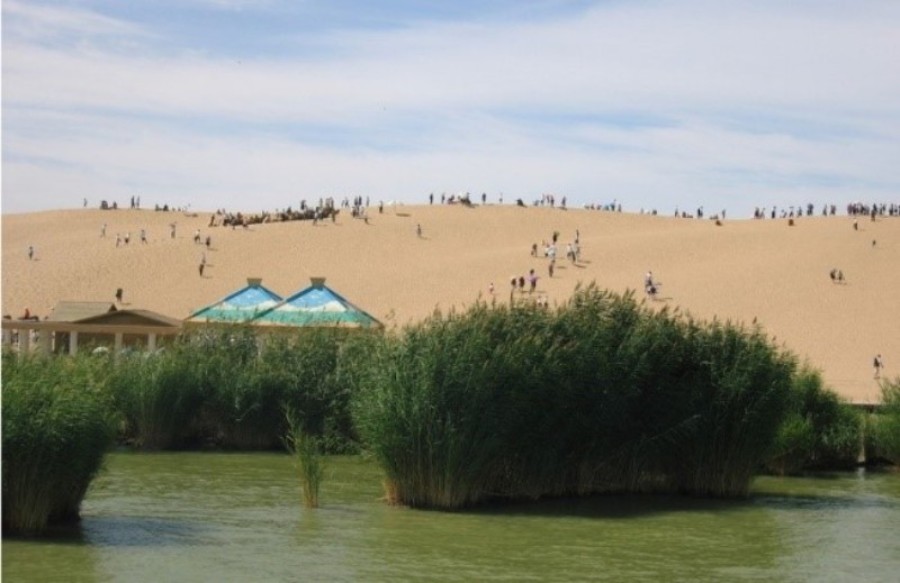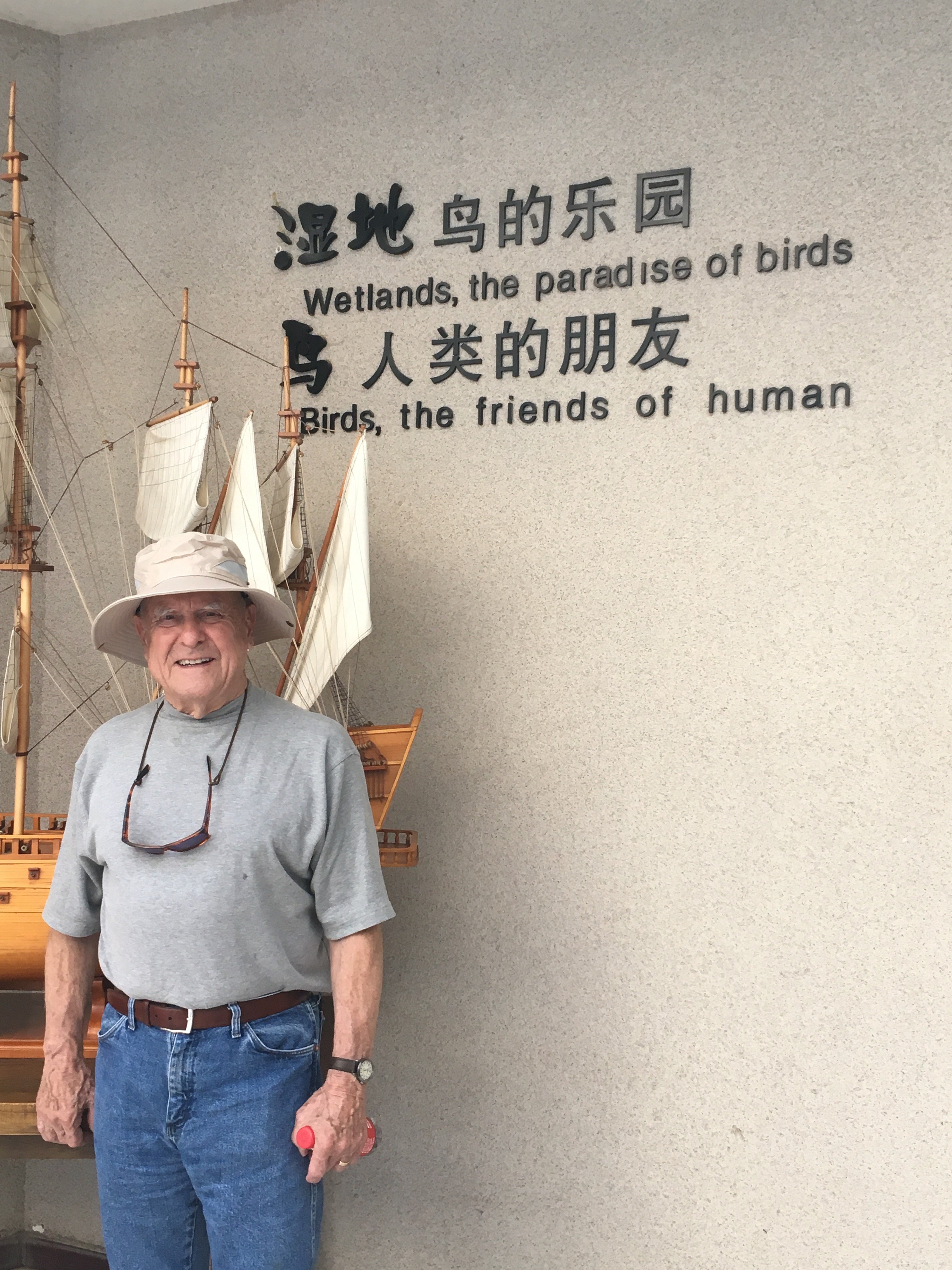This is Part Two of our Four Part Series: Restore the Earth Dispatches from China.
To read Part One, click here.

Restore the Earth Co-Founders Marv and PJ Marshall with Jay Henderson, Senior Adviser, China Global Philanthropy Institute, at the Baofeng Ecological Farm in Ningxia
Dispatches from China: Part Two
After visiting the capital city of Beijing, Restore the Earth was invited by the China Global Philanthropy Institute, East West Charity Forum, Baofeng Group and Ningxia Yanbao Charity Foundation to participate in the Ningxia Sustainability Summit — a forum convening leaders from China and the United States aimed at achieving sustainability through philanthropy, innovation and collaboration.
We traveled west, toward the country’s interior, and along with 60 global philanthropic leaders – including the Gates Foundation, Kissinger Institute, Paulson Institute, Bloomberg Philanthropies, and Julie Ann Wrigley Global Institute of Sustainability – shared experiences in sustainable development.

Restore the Earth‘s “North America’s Amazon initiative” and our Yangtze River Alliance with the Changjiang Conservation Foundation were featured during the two day summit. Among those in attendance were the Fukutake Foundation, Yanbao Charity Foundation, Lao Niu Foundation, Beijing Dongfangjun Charitable Foundation, Blue Planet Foundation, Wen Ya Ai Xin Foundation, Kunsan Yuting Foundation – proving that philanthropy has become a major priority in China’s massive economy.


Above left: Zhenhua Xie, Special Representative for Climate Change Affairs for China along side Yanboa Dang, Chairman of the Ningxia Baofeng Group Above right: Goji berry crops planted and harvested underneath the solar panels.
Baofeng Solar Farm and Goji Berries in Ningxia
During this part of our trip, we were inspired by a visit to the Baofeng Ecological Farm in Ningxia, a visionary sustainable project funded and successfully implemented by our hosts, the Baofeng Group and its Yanbao Charitable Foundation.
The Ecological Farm project is a 25-square-mile solar farm with elevated solar panels. The panels are raised 10 feet off the ground so that an agricultural farm can grow a crop of ancient and very popular goji berries underneath. An innovative drip irrigation system and automated crop management technology nourishes the berry crop. The project also provides for sustainable local jobs and community income. And while an abundance of healthy, tasty goji berries are being produced, this project is also yielding thousands of KwH of renewable energy for the region.
This is a sustainable development project that combines the best of current technologies to grow more with less. It’s greater productivity with less water, less energy, and less land.

Did You Know? Solar plants generated 66.2GW of China’s electricity last year.



Images of Sand Lake
Ecological Reserve at Sand Lake in Ningxia
We arrived at Sand Lake late in the afternoon to find a wetland oasis amid the golden desert. This is an ecological preserve where the desert, the Yellow River, the hills, and the oasis all meet.
We took a boat from the dock across the wetlands to the gigantic sand dune formed by the desert, right next to the wetlands. It is 2,000 meters wide, 100 meters high, and has a 60-degree incline.
Looking across the wetlands, it’s a paradise for a variety of birds such as white cranes, black cranes, red-crowned cranes, swans, wild ducks and mandarin ducks. There is an abundance of fish, and the reeds and lotuses seem to be endless in the lake.
The Yellow River enriches the soil in Ningxia near the desert to be as fertile as the land in southern China, making it a critical agricultural area for the country.
Grid planting of trees within the desert has been taking place since the 1950s to control sand encroachment and storms. The UN has hailed these efforts as “a miracle in the history of sand control.”
Adventure buffs (not us) can cross the water the ancient way — on a goatskin raft – or ride a camel across the desert, parasail, waterski, or stick your oar in the water on a dragon boat.



This was Part Two of our Four Part Series: Restore the Earth Dispatches from China. Stay tuned for Part Three when we finally reach the Yangtze or the “Mother River” of China and visit the Three Gorges River Dam.

Above: View of Three Gorges River Dam
Click here for Part Three